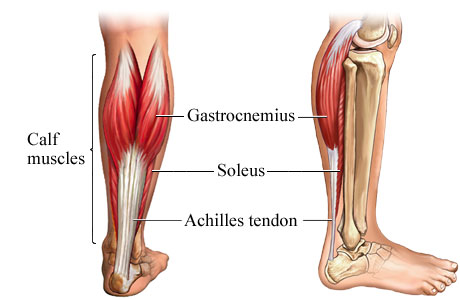
Did you know that toe walking causes children to expend on average, 53% more energy when walking? Additionally, it can lead to future problems like knee instability, injuries, joint pain, arthritis, and impaired function. However, it can be corrected!
Toe walking is a gait pattern characterized by walking on one’s toes, with no contact between the heels and the ground. Toe walking is very common in children who are learning to walk. However, after the age of 2, children should outgrow this pattern of walking and begin to walk with a normal heel-to-toe pattern.
In the vast majority of children, toe walking is “idiopathic,” meaning the exact cause is unknown. When these children are evaluated by a doctor, their physical exams and neurological tests are normal. In a smaller number of cases, persistent toe walking can be a sign of an underlying medical condition, such as: cerebral palsy, muscular dystrophy or spinal cord abnormalities.

In children who toe walk, the calf muscle- achilles tendon combination may be shorter at birth, or may shorten over time due to tight muscles, which prevents the child from touching his or her heels to the ground and walking flat-footed. If this gait pattern isn’t managed properly, as the child grows, the muscles continue to tighten, pulling more at the achilles, progressing the deformity leading to gait instabilities, abnormalities and problems wearing shoes or participating in sports that require flat feet for equipment, hockey skates and roller skates.
Treatment:
If your child is toe walking out of habit, treatment isn’t needed. He or she is likely to outgrow the habit. Your doctor might simply monitor your child’s gait during office visits. If a physical problem is contributing to toe walking, treatment options might include:
- Serial casting. Your doctor may apply a series of short leg walking casts to help progressively stretch and lengthen the muscles and tendons in the calf and break the toe-walking habit. Serial casting is usually performed over a period of several weeks.
- Botox therapy: For certain patients—usually those with a neurologic abnormality that leads to increased muscle tone—an injection of Botox® may also be given to temporarily weaken the calf muscles. This will allow the muscles to stretch more easily during casting or bracing.
- Surgery: For more severe presentations and older children, the doctor may recommend a surgical procedure to lengthen the Achilles tendons. Lengthening the tendons will improve range of motion and allow better function of the foot and ankle.

The key to all these treatment options is maintaining the lengthened muscles and joint range of motion via physical therapy and bracing! That is where your local rehabilitation team comes into play! Physical therapy is great for providing stretching and strengthening exercises while AFOs will provide a low grade stretch while wearing the braces and encourage proper ankle alignment when walking!
For parents, it is important to understand that toe walking does not indicate an underlying problem for most children! If you are concerned with how your child is meeting developmental milestones or walking, please reach out to our office! We are happy to provide a consultation and answer any and all questions!
